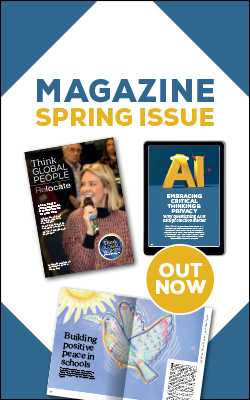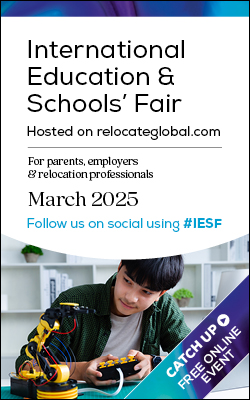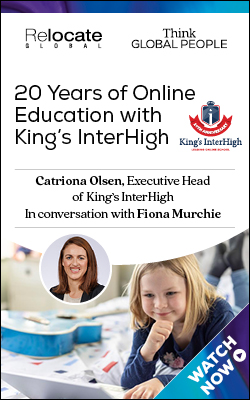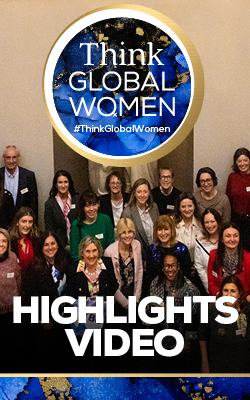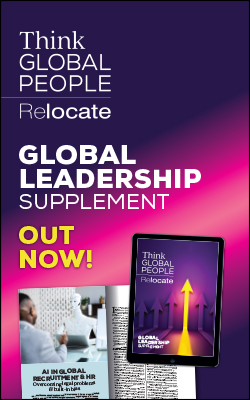Transforming the global mobility function
In her three-part analysis of HR’s journey from reactive personnel operation to strategic human resources function, Dr Sue Shortland draws lessons from HR theory and practice to highlight how the global mobility profession can reach its strategic objectives. In this third part, she explores how the current HR operating model is being transformed for the future.

This article is taken from the Autumn 2024 issue of
Think Global People magazine
Click on the cover to access the digital edition.In the previous two articles in this series, we looked at the work of academics John Storey and Dave Ulrich to understand how the HR profession achieved its goal of becoming a strategic partner and change agent with a seat at businesses’ top table.We have considered the steps global mobility (GM) professionals might take to follow HR to reach the desired status of strategic business partner. It is also important to think about how we can go beyond this and future-proof the function because GM can align more with what HR is doing right now to secure its strategic future.
Learning from case study examples
This summer, HR’s professional body, the Chartered Institute of Personnel and Development (CIPD), reported on how the NatWest Group is transforming HR’s operating model.* NatWest’s strategy has been to focus on taking employee experience to the next level. It is aligning the experience employees receive with that delivered to its customers.In essence, NatWest plans to go beyond the template that has informed HR’s strategic journey over the years – the Ulrich HR model, where the profession progresses from functional expert to employee advocate/human capital developer, to strategic partner – by recognising its limitations. It is creating a more agile, connected and adaptable function able to respond more effectively to employee needs.The CIPD reports that NatWest Group’s focus on improving the employee experience is driven by a number of factors requiring concerted action. These include:- the demand for talent
- technology’s momentum
- demographic changes in the workforce that require a new response to the expectations of the Millennial generation.
- having guardrails and standards, such as clear frameworks and parameters
- translating people strategy into tangible outcomes with a focused HR function through setting annual objectives and key results to guide design choices
- clear prioritisation of activities on a quarterly basis to avoid blockages in the journey and ensure rare skill sets are in the right place at the right time.
Read related articles
- Global mobility professionals: Looking to the future by learning from HR’s past
- The future of the global mobility function: Learning from HR’s evolution
Parallels and lessons for global mobility
There are parallels here for the GM profession. First, demand for talent that has international experience is growing. Second, technology is increasingly underpinning the transfer of personnel globally. Third, demographic change is resulting in a different profile of international assignees – with greater diversity of age, as well as other characteristics, not least family circumstances.There is also no doubt that globally mobile employees today have very different expectations from their predecessors. The days of a relocated senior male executive with an accompanying non-working wife and family are long gone. The younger generation has far more diverse family circumstances and expects both partners to work. Indeed, dual career concerns are a key factor in assignment acceptance.Emphasis has increasingly been placed in recent years on improving the employee experience. We know that if this is excellent, it helps to attract, motivate and retain key talent. Global mobility cannot stand still. It needs to ensure continuous improvement and achieve an holistic, employee-focused solution to each and every move.International policy design is becoming more flexible. The global mobility function is already using flexible policy frameworks and guardrails as enablers rather than sticking with rigid policy application. Such flexibility does improve the employee experience and fosters diversity and inclusion.Setting a global mobility strategy that demonstrates the profession’s focus is a step that global mobility must take if it is to ensure that objectives are set and met and goals are prioritised. Regular review, for example quarterly as in the NatWest case, will be helpful to ensure actions stay on track in the goal-led journey. Use of technology also needs to be part of this review process. These reviews need to be undertaken regularly to see where technology can help improve the employee experience further, as well as reduce any manual actions required.Challenges and outcomes
The NatWest case does identify some challenging areas. These included the pace of change and difficulties prioritising critical issues and ensuring appropriate personnel were aligned to deliver on the goals identified.Second, a cultural shift proved problematic. Changing ways of working, goals and priorities – and how these are addressed – is not straightforward. Traditional methods have to be challenged and new approaches embraced. This cultural shift requires support, potentially through targeted leadership development and interventions such as coaching.The third key challenge identified was striking the right balance between human activity and digital solutions. While artificial intelligence and technology can provide support to improve the employee experience, they cannot do this alone without some form of human oversight.NatWest reports that its employee experience has improved, particularly through the simplification of processes and technology. Employee experience has improved through faster query resolution times. It has become easier and quicker for employees to interact with systems that are in place. For HR, benefits include the reduction of manual approaches. Technology has freed up time for HR to be involved in more strategic operations. This is not the end of the story though; rather it is the beginning of a continuous review process.Further lessons for global mobility
Once again there are lessons here for the global mobility profession. It must focus on increasing the pace of change, as well as prioritising key issues that will result in an enhanced employee experience.A cultural shift will be required, changing the way the global mobility function works, particularly in respect of interactions and interrelationships with relevant capabilities across the business. Global mobility may require leadership development and coaching to achieve this cultural change.The function also needs to ensure that it has a good grasp of the technological solutions available and is capable of assessing the right balance between when using technology is appropriate and when a mobility adviser needs to intervene. Global mobility is already well-versed in using technology to support international mobility and so it is well-placed to know when to step in to balance the services provided through technology versus via the human touch.Transformation tips
Finally, the CIPD’s case study of NatWest Group’s transformation journey provides some top tips for others. It suggests that core objectives must be kept front and centre and a targeted approach has to be devised to develop capabilities within the HR function. Clearly, these are lessons that will apply to global mobility as well.The case study also suggests the need to partner with leaders across the business to understand strategic drivers. Once again, global mobility can learn from this tip – it must build relationships across home and host country operations in order to play a strategic role in future.A further tip concerns the development of an agile mindset and embracing flexibility. It is recommended that anyone undertaking a transformation journey starts with small steps, then moves forward. There is definitely wisdom in this approach. Global mobility could opt to take a goal and journey approach within one aspect of its relocation programme to test out how this might be improved to create a better employee experience before widening out to cover other aspects of the relocation programme.Successful transformations are those where leaders model the new way of working. Global mobility professionals need to emulate HR in this respect and lead transformation from the front. This will require prioritising and making decisions in a timely manner and demonstrating to leadership an agile approach to global mobility.Global mobility professionals might also consider the importance of learning and development to achieve a successful transformation journey. The function will need to ensure that it has clarity of purpose, and the appropriate professional knowledge and skills, in order to identify critical goals and fulfil its journey towards them. Leadership capability includes both self-leadership and that of leading others.Bringing people together who share common purpose, principles and desire for change can result in a future-facing, exciting role for the global mobility profession. Looking ahead, working towards a transformation journey focusing on the employee experience can bring the global mobility profession to the forefront of a strategic business role in the decades ahead.*Transforming the HR Operating Model: NatWest Group. Available from CIPD.
Find out more about the Think Global People and Think Women community and events.

Subscribe to Relocate Extra, our monthly newsletter, to get all the latest international assignments and global mobility news.Relocate’s new Global Mobility Toolkit provides free information, practical advice and support for HR, global mobility managers and global teams operating overseas.
©2025 Re:locate magazine, published by Profile Locations, Spray Hill, Hastings Road, Lamberhurst, Kent TN3 8JB. All rights reserved. This publication (or any part thereof) may not be reproduced in any form without the prior written permission of Profile Locations. Profile Locations accepts no liability for the accuracy of the contents or any opinions expressed herein.







